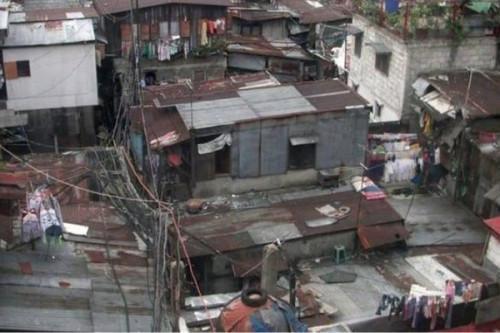By Synthia Lateu
Despite a notable decline in inflation, poverty remains widespread in Cameroon, with the number of people living on less than CFA 1, 200 ($2.15 in 2017 purchasing power parity ) per day rising from 6.2 million in 2021 to over 6.9 million in 2024, according to the World Bank’s latest Cameroon Economic Update. This has pushed the international poverty rate up from 22.8% in 2022 to 23.3% in 2024.
The report, published on June 14, attributes the persistent poverty to low economic growth, rapid population increase, and limited job creation. Between 2023 to 2024, urban poverty incidence nearly doubled, and the number of poor people living in urban areas more than doubled – reshaping the country’s poverty profile.
The World Bank report further explains that urbanization is accelerating in Cameroon, with 60 percent of the population now residing in urban areas.
” Factors such as escalating conflicts, natural disasters, and the pursuit of better economic prospects and services have driven rural-to-urban migration over the past two decades. However, rural-urban migrants face higher poverty rates than other urban inhabitants, as rapid urbanization is not accompanied by productivity enhancing structural transformation” the report states.
While poverty levels remained high, inflation declined significantly, dropping from 7.4% in 2023 to 4.5% in 2024. The disinflation was supported by tighter monetary policy, price controls, and a reduction in imported inflation. This occurred despite two increases in fuel prices at the pump in February 2023 and again in March 2024 following subsidy reductions that peaked at 3.0% of GDP in 2022.
The World Bank notes that the decline in inflation was mainly due to lower price increases for locally produced goods, and to a lesser extent, imported goods. Food prices were a major factor, easing from 10.4% in 2023 to 5.6% in 2024. Transport price inflation also fell, from 16.2% in 2023 to 12.3% in 2024. Energy inflation slightly decreased to 7.7% at the end of 2024, down from 8.8% the previous year.
In terms of economic performance within the CEMAC zone, Cameroon recorded one of the strongest growth rates, with real GDP growth at 3.5% in 2024, up from 3.2% in 2023, largely driven by increased exports of cocoa and cotton. Only Chad performed better, with a growth rate of 3.7%.
On the fiscal front, the World Bank observes that Cameroon’s external and overall public debt remain sustainable, though the country is still classified as being at high risk of debt distress due to liquidity constraints.
Cameroon now faces a delicate balancing act between sustaining public spending and managing its growing debt vulnerability amid a tightening fiscal space. In response, the government recently revised the 2025 state budget, increasing it from 7,317.7 billion FCFA to 7,735.9 billion FCFA, as per the presidential ordinance of July 11, 2025. To finance the gap and maintain budgetary balance, it approved borrowing up to 930 billion FCFA—600 billion FCFA through public securities on the domestic financial market, and 330 billion FCFA from external financial markets.
